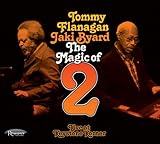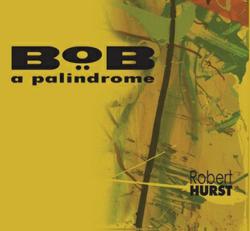2012_r.r.jones_.jpg) |
| The Monterey Jazz Festival Band |
As a jazz reporter, I've experienced my share of all-star jazz
bands that fail to rise to their billing. In theory the star powered bands
work, but in reality there’re often disappointing. The Monterey Jazz Festival
band—Christian McBride, Dee Dee Bridgewater, Chris Potter, Benny Green, Lewis
Nash and Ambrose Akinmusire—is an all-star band the works theoretically and in
reality.
They proved that much song after song Thursday evening during their concert at Orchestra Hall in midtown Detroit. Whoever thought to
put those jazz musicians in the same band knew what they’re doing.
The two-hour concert opened with a cute duet with McBride and Bridgewater. They flirted with each other like puppy-love struck teens before they performed Billie Holiday’s number “My Mother’s Son-in-Law”.
McBride and Bridgewater proved to be a likable couple on McBride’s 2010 album “Conversations with Christian”. Bridgewater knows how to work a stage. She normally does it with sexual innuendo that would offend many churchgoers.
McBride and Bridgewater proved to be a likable couple on McBride’s 2010 album “Conversations with Christian”. Bridgewater knows how to work a stage. She normally does it with sexual innuendo that would offend many churchgoers.
To Bridgewater's credit
the innuendo works. Her audience enjoys the teasing although it can be annoying
at times. Bridgewater's voice was lovely, and she provided some comic relief.
After the Holiday number ended and the near capacity audience was sufficiently
buttered up, McBride introduced the rest of the band.
Akinmusire, the youngest
member was the butt of McBride’s jokes. The trumpeter, who shared his gift with
the jazz world on his Blue Note debut “When the Heart Emerges Glistening,” took
the ribbing in stride and played until his ass caught fire.
The band served up outstanding
versions of “Let the Good Times Roll,” “Shades of the Cedar Tree” and “ Tango”.
All the members had their moments in the sun. Hands down, Green was the MVP.
Green is a physical piano player.
While playing he twisted his body like a
college wrestler. Green is an unsung swinger with a body of work to prove it.
All night he played like the devil possessed his fingers, especially on another
Holiday favorite “God Bless the Child”.
Between numbers some members talked
about the history of the Monterey Jazz Festival, and how they figured into it. McBride
is the official leader of the band, but Bridgewater behaved at times like she
was the boss.
Obviously, Bridgewater isn’t used to playing second fiddle to anyone even a
musician of McBride’s accomplishments. McBride and the others were unfazed when
Bridgewater hogged the spotlight. I think the audience figured it was Dee Dee
being a diva. Bridgewater can be a ham.
But undeniably, she’s one of the top jazz singers
working. I’ve attended a half-dozen of her concerts. I’ve never left
disappointed. She’s the consummate show-woman. But sometimes her antics and the
sexual innuendo are overkill. Unlike too many all-star bands the Monterey Jazz
Festival band works in theory, but most importantly it works in reality.




